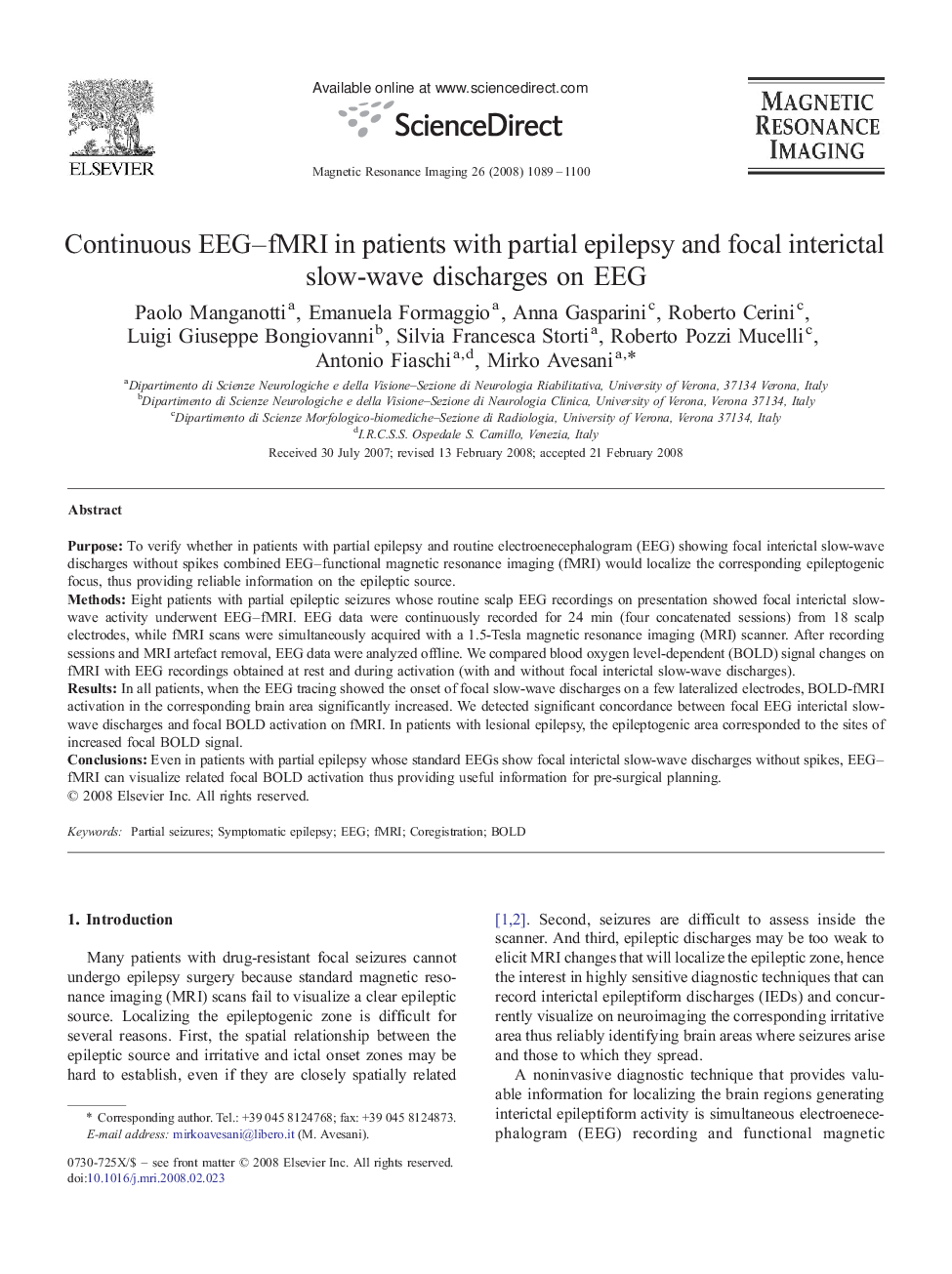| Article ID | Journal | Published Year | Pages | File Type |
|---|---|---|---|---|
| 1807405 | Magnetic Resonance Imaging | 2008 | 12 Pages |
PurposeTo verify whether in patients with partial epilepsy and routine electroenecephalogram (EEG) showing focal interictal slow-wave discharges without spikes combined EEG–functional magnetic resonance imaging (fMRI) would localize the corresponding epileptogenic focus, thus providing reliable information on the epileptic source.MethodsEight patients with partial epileptic seizures whose routine scalp EEG recordings on presentation showed focal interictal slow-wave activity underwent EEG–fMRI. EEG data were continuously recorded for 24 min (four concatenated sessions) from 18 scalp electrodes, while fMRI scans were simultaneously acquired with a 1.5-Tesla magnetic resonance imaging (MRI) scanner. After recording sessions and MRI artefact removal, EEG data were analyzed offline. We compared blood oxygen level-dependent (BOLD) signal changes on fMRI with EEG recordings obtained at rest and during activation (with and without focal interictal slow-wave discharges).ResultsIn all patients, when the EEG tracing showed the onset of focal slow-wave discharges on a few lateralized electrodes, BOLD-fMRI activation in the corresponding brain area significantly increased. We detected significant concordance between focal EEG interictal slow-wave discharges and focal BOLD activation on fMRI. In patients with lesional epilepsy, the epileptogenic area corresponded to the sites of increased focal BOLD signal.ConclusionsEven in patients with partial epilepsy whose standard EEGs show focal interictal slow-wave discharges without spikes, EEG–fMRI can visualize related focal BOLD activation thus providing useful information for pre-surgical planning.
